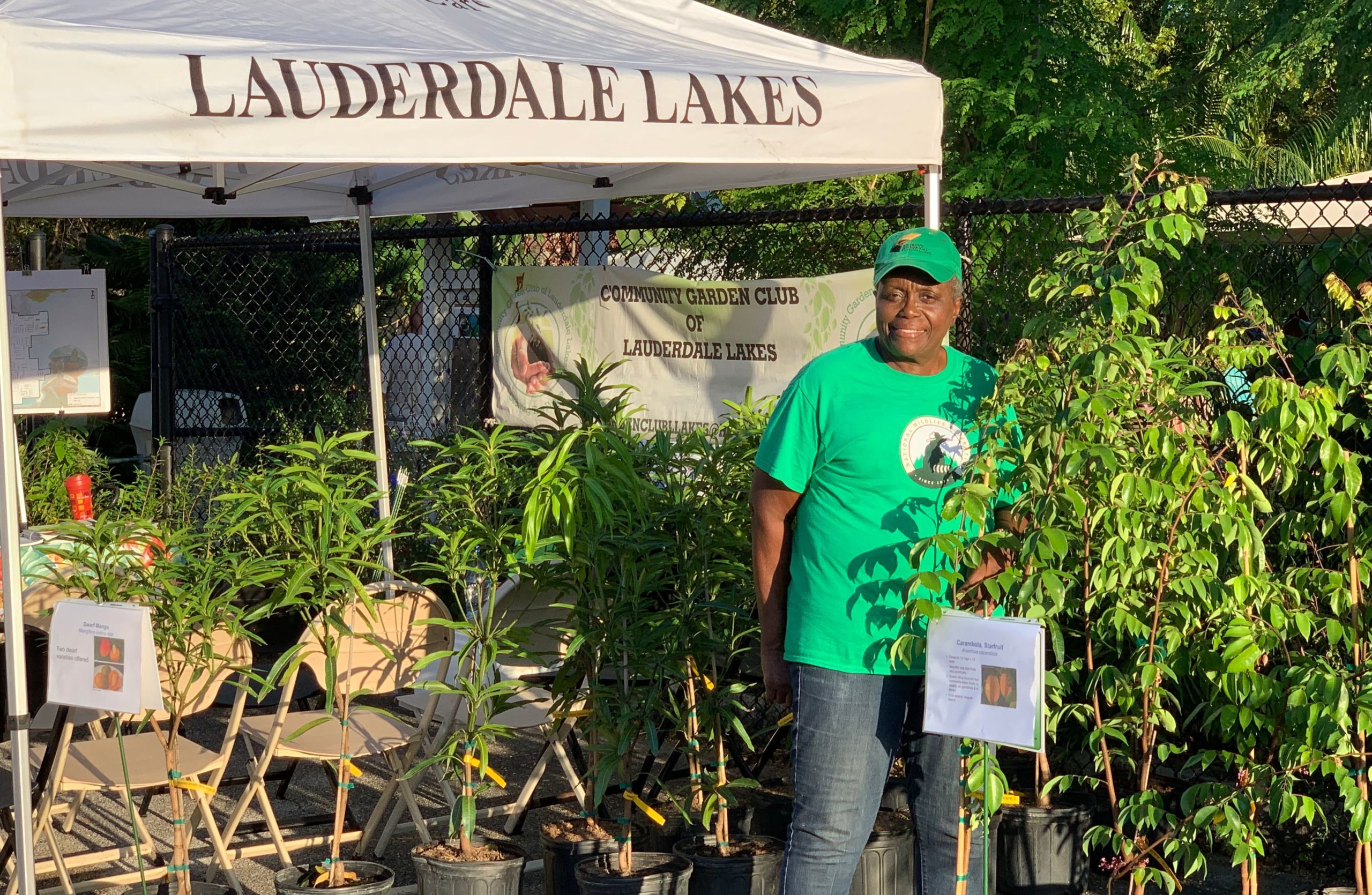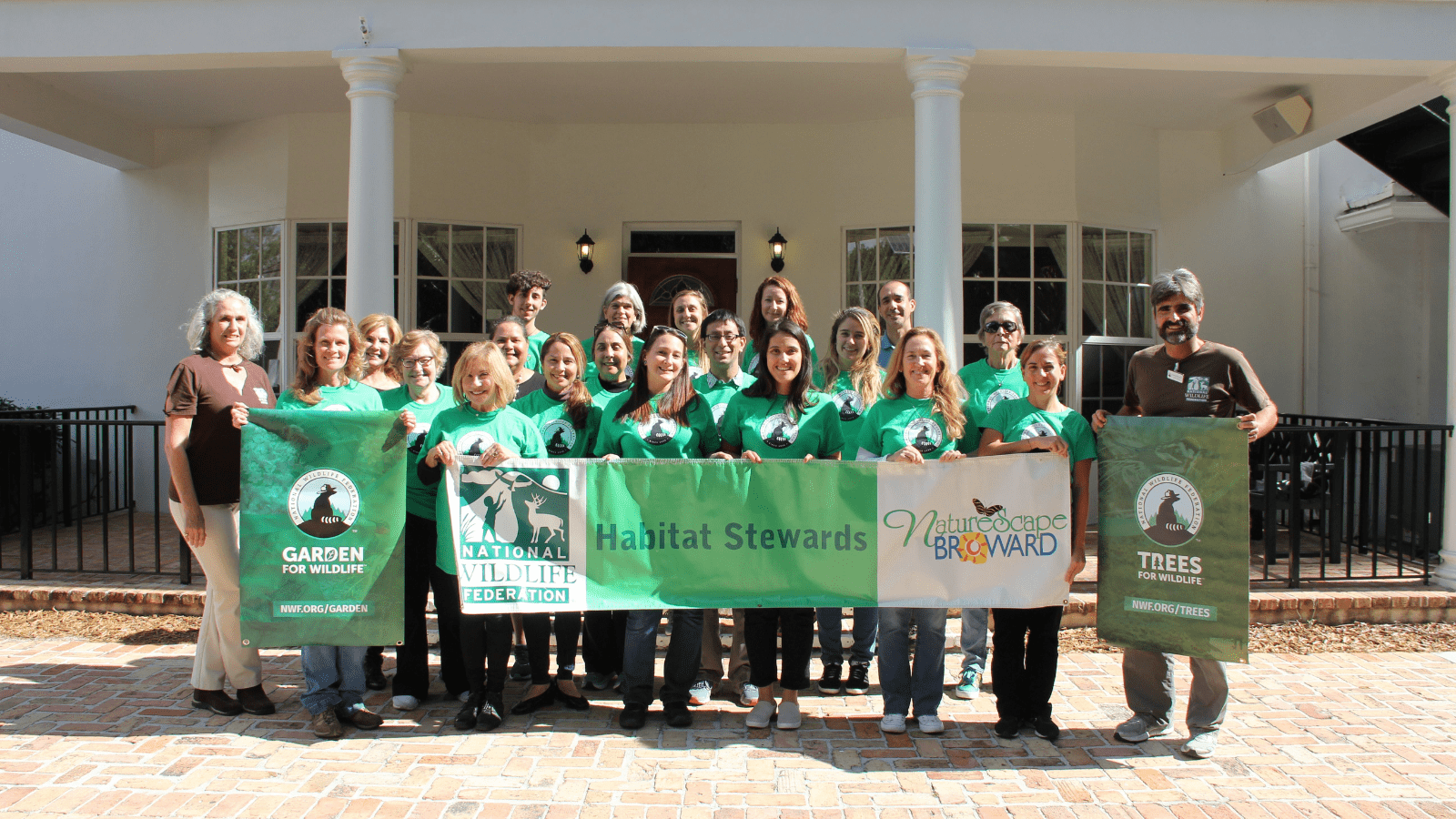We have much more to do and your continued support is needed now more than ever.
Expanding Tree Canopy and Environmental Stewardship in Broward County, FL

Broward County, Florida, is nestled in southeastern Florida, just north of Miami-Dade County with the Atlantic Ocean to the east and the Everglades to the west. It is Florida’s second-most populous county, has the 6th largest school district in the United States, and is home not only to diverse populations of wildlife, but also an active network of local elected officials, teachers, principals, park professionals, volunteers, scientists, and other community leaders striving to create more resilient places to live for people and wildlife.
Over the last 20 years, NWF has supported a network of on-the-ground partners who are working to create more resilient places to live for people and wildlife. For the last six years, NWF, working with its close partner NatureScape Broward, has led the Broward Habitat Connectivity Project with support from the Community Foundation of Broward.
Watch our newest video, documenting how the Broward Habitat Connectivity Project (BHCP) is working to create more climate-resilient communities by planting trees, creating habitat, and expanding green space.
Migratory Birds and Habitat Connectivity
More than 1,000 bird species occur in the United States and U.S. Territories. Some live year-round in Broward County, Florida; others migrate here seasonally, and some stop in on their migratory routes to and from other countries. Of these birds, dozens are listed as endangered or threatened under the Endangered Species Act, facing threats such as climate change, habitat loss, and pollution. As migratory birds fly over Broward County they may notice the more than 50,000 new trees or 20 new habitat sites planted by the Broward Habitat Connectivity Project since 2016.
Dozens of partners and local residents came together to create new islands of habitat over the past six years. Volunteers and staff planted native trees and shrubs across Broward County and attended or supported more than 125 public or school-based events and workshops. Community buy-in and environmental stewardship are essential for building climate-resilient communities, and the BCHP has been successful largely in part to the thousands of teachers, students, volunteers, and residents investing in people and wildlife.
Local Residents Lead the Charge
The science is clear, urban canopies keep cities cool when temperatures climb. This is why Broward County Leadership included a goal of 40% tree canopy across the entire urban county in the Broward County Climate Action Plan. Partners of the BCHP knew that this goal would only be successful by building relationships with residents and local leaders in areas with the least number of trees and green space.

Lauderdale Lakes City Commissioner, Beverly Williams, is known as the “Garden Champion of Broward County.” She has earned this title because of her leadership at the Children’s Community Garden, a community-managed space that has been the home base for many BHCP events. Born and raised in Florida with generational roots to the land and growing food locally, Beverly Williams is bringing her environmental leadership to the wider community, connecting with children, parents, and everyday residents.
The Children’s Community Garden has become a community bonding space as Beverly and her team supported residents during the COVID-19 pandemic by offering fresh produce to any resident who wanted it.

In Lauderhill, Mayor Ken Thurston has been an active and engaged collaborator, bringing the BHCP to his residents. He has been an elected official in Lauderhill for 12 years! Mayor Ken Thurston shares in our new video that residents of Lauderhill are leading efforts to address urban heat and tree equity. Mayor Thurston reflected on a notable rise in residents planting trees with a focus on selecting natives and species optimal for climate resilience. This shift, he says, is due to the dedicated staff and volunteers of the BHCP. Thurston and many other local officials in Broward recognized that public engagement and buy-in is crucial for projects aiming to address urban tree canopy.
Environmental Stewardship Fosters Social Resilience
The BHCP showed us that gardens, pocket parks, school habitats, and small areas can be integral building blocks of social infrastructure. When residents feel connected to their local environments, they are more likely to seek out behaviors to help protect their environment.
Such environmental stewardship is one of the most beneficial skills and values we can cultivate in our communities. When combined with quality accessible education, adaptable management, and advocacy, we see positive outcomes such as expanded urban tree canopy and community engagement. In fact, research has shown that environmental stewardship has served as a catalyst for revitalizing communities.
Environmental stewards can foster social resilience as part of disturbance and recovery cycles, and public green spaces can provide place attachments, a collective identity, social cohesion, knowledge exchange, and social networks.

This work has proved that when organizations like National Wildlife Federation connect grant opportunities to community-based organizations, local elected officials, and volunteers, we see positive outcomes in achieving urban tree equity and habitat restoration. To learn more about the Broward Habitat Connectivity Project please watch and share our new video!
For more resources on content relating to community-driven conservation check out the Community Wildlife Habitat program for ways to get involved in your community.






















